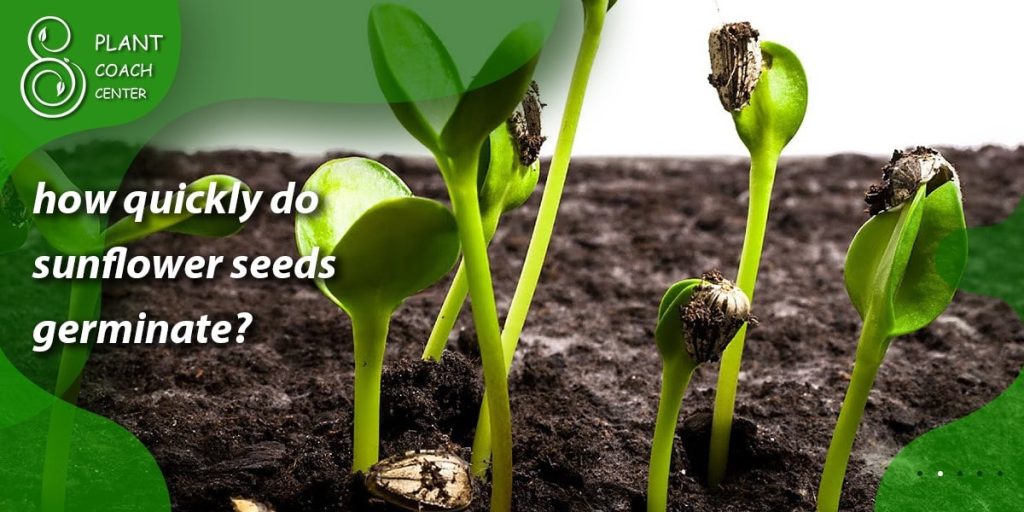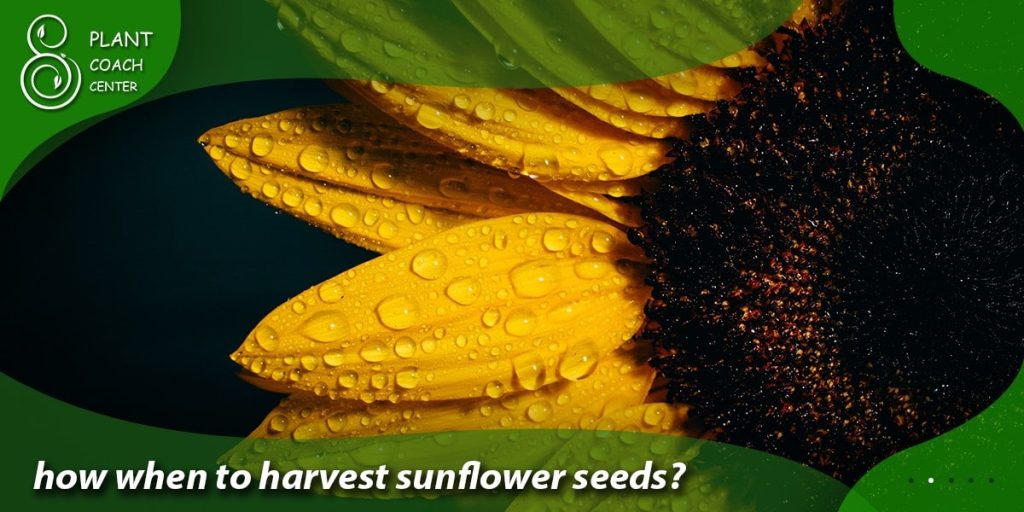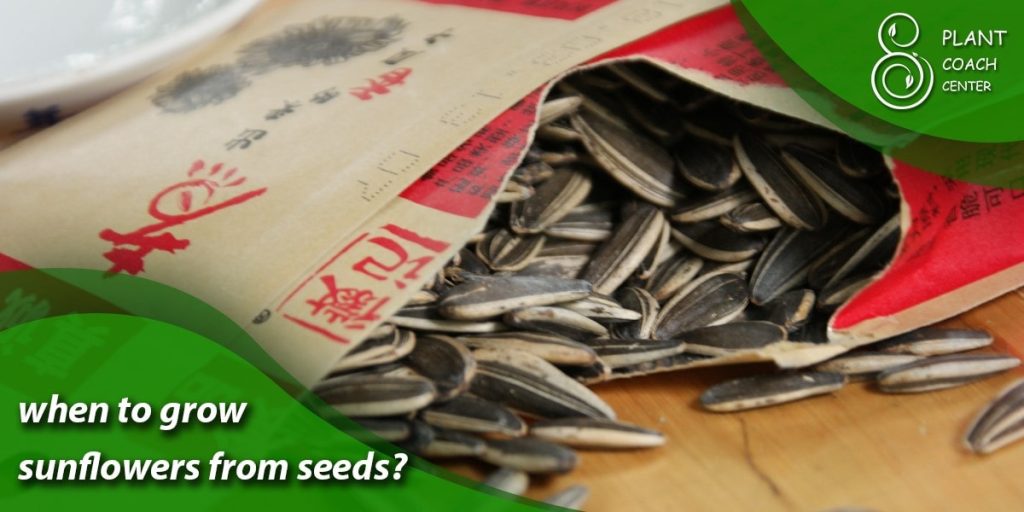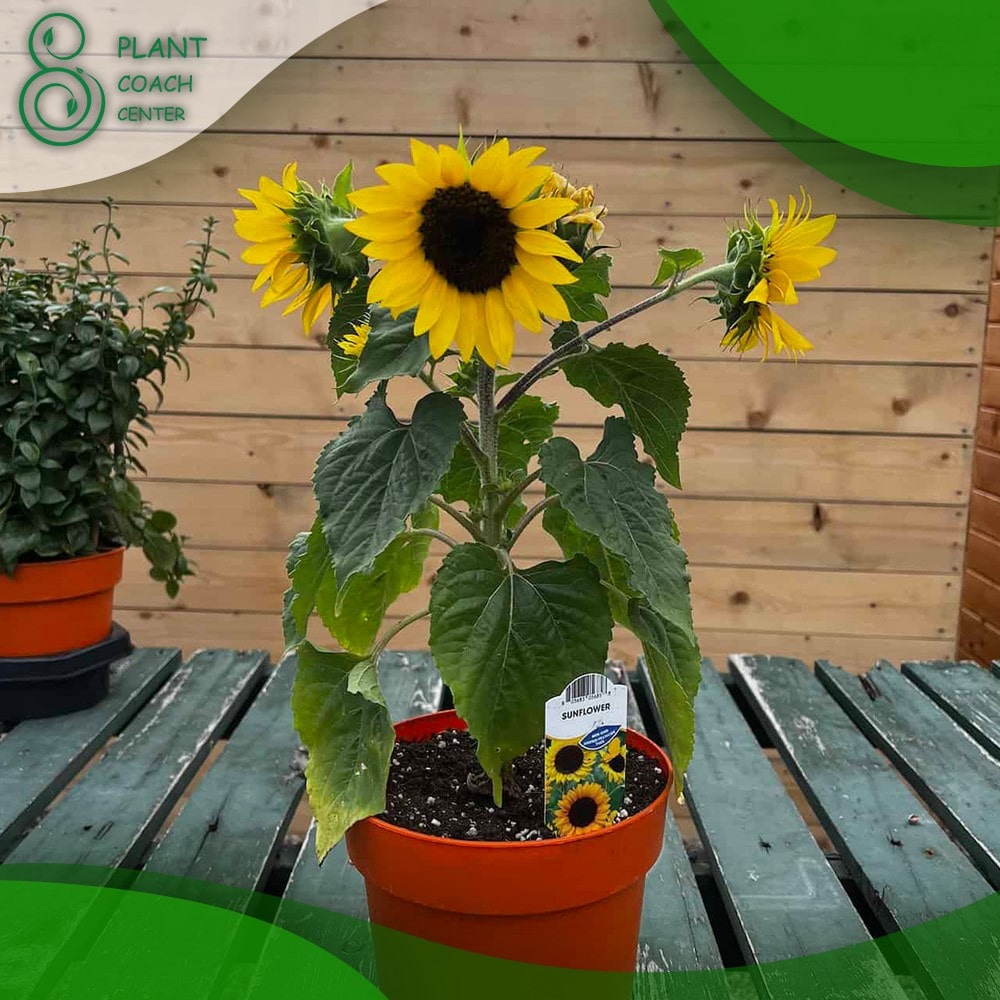When to grow sunflower seeds
As the sun graces the horizon with its warm embrace, nothing is as awe-inspiring as a field of sunflowers stretching toward the heavens. With their golden petals, these vibrant giants capture the essence of summer’s brilliance. But here’s the secret to cultivating this natural spectacle: timing. Planting sunflower seeds isn’t just putting them in the ground and hoping for the best; it’s a dance with nature’s clock.
In this botanical journey, we will unravel the art of planting sunflower seeds at precisely the right moment. From deciphering seasonal cues to understanding the unique preferences of sunflower varieties, we’ll guide you through the calendar of sunflower splendor.
So, whether you’re a seasoned gardener looking to enhance your sunflower garden or a novice eager to witness the magic of these radiant blooms, join us as we unveil the secrets of when to grow sunflower seeds. Get ready to embrace the sun’s favorite children and bask in the radiant glory of the perfect sunflower bloom.

Seasonal Sunflower Splendor
Sunflowers, those cheerful symbols of sunshine, aren’t just limited to a single growing season. Depending on your location and climate, you can enjoy their splendid blooms at various times throughout the year. Understanding the ideal seasons for planting sunflower seeds is the first step toward achieving a vibrant sunflower garden.
Spring Awakening
Spring is often considered the prime time to sow sunflower seeds in many regions. As temperatures rise, the soil warms up, providing an excellent environment for germination. Sunflowers planted in spring typically peak during summer, adorning your garden with their bright colors and providing a feast for pollinators.
Summer Delight
While spring planting is the classic choice, consider the possibility of sowing sunflowers in early summer, especially if you live in a region with a late spring or mild winter. Planting sunflowers in early summer can extend the bloom season, offering a stunning display well into the fall.
Fall Enchantment
Contrary to common belief, you can also plant sunflower seeds in late summer or early fall, especially in areas with mild winters. These late-season plantings can surprise you with a burst of sunflower splendor just before the onset of winter, adding a touch of warmth to the changing landscape.
Overwintering Marvels
Overwintering sunflowers can be a unique experience in regions with mild winters. By planting sunflower seeds in the fall, you allow them to establish robust root systems during winter. When spring arrives, these sunflowers will burst forth with an early display of color.
Sunflower Varieties for Every Season
Regarding sunflowers, variety is not just the spice of life; it’s the key to a garden that can burst into glorious bloom throughout the year. Whether you plan to plant sunflower seeds in the spring, summer, fall, or even winter, choosing the suitable sunflower varieties can make all the difference. Here’s a guide to help you select the perfect sunflower varieties for each season:
Spring Marvels
Dwarf Sunflowers: Compact varieties like the ‘Sungold’ or ‘Teddy Bear’ are excellent choices for early spring. They bloom quickly and add a burst of color to your garden.
Giant Sunflowers: If you have ample space and are patient, planting giant sunflowers like the ‘Russian Mammoth’ in spring can lead to towering beauties by mid-summer.
Summer Stars
Classic Yellow Sunflowers: Varieties like Lemon Queen or Autumn Beauty are classic summer favorites. Their sunny disposition perfectly complements the season.
Multicolored Sunflowers: Experiment with varieties that showcase a range of colors, such as ‘Velvet Queen’ with its deep red petals or ‘Strawberry Blonde’ with its unique blend of pink and gold.
Fall Fireworks
Late-Blooming Varieties: Opt for sunflowers with longer bloom cycles, like the ‘Italian White’ or ‘Vanilla Ice,’ to keep your garden vibrant well into the autumn months.
Sunflower Mixes: Fall is an ideal time for mixed sunflower varieties, creating a diverse and colorful display that mimics the changing leaves.
Winter Wonders
Overwintering Varieties: For regions with mild winters, select sunflowers that can withstand cooler temperatures, such as ‘Sunspot’ or ‘Evening Sun.’ Plant them in the fall for early spring blooms.

Unlocking the Sunflower Seed Calendar
Planting sunflower seeds at the right time ensures a stunning display of these radiant blooms. To master the art of sunflower gardening, you need to understand the sunflower seed calendar—a roadmap that guides you through the entire growth cycle. Here’s a breakdown of the critical phases in the life of sunflower seed and when you should plan your gardening activities:
Sowing Seeds (Early Spring)
The journey begins with sowing sunflower seeds in early spring, typically when the soil temperature reaches around 50°F (10°C). This marks the start of the growing season.
Select a sunny spot in your garden with well-drained soil, as sunflowers thrive in full sunlight.
Plant the seeds about 1 to 1.5 inches deep, with a 6 to 12 inches spacing between each seed, depending on the variety.
Germination and Seedling Stage (Late Spring to Early Summer)
In a matter of days, you’ll witness the first signs of life as your sunflower seeds germinate and seedlings emerge.
During this phase, maintain consistent moisture levels in the soil to support healthy seedling growth.
Growth and Development (Summer)
As summer approaches, your sunflower plants will enter a period of rapid growth, with stems shooting up and leaves expanding.
Ensure the soil remains moist but not waterlogged, as sunflowers are relatively drought-tolerant once established.
Blooming (Mid to Late Summer)
The true spectacle of sunflowers begins when they reach their blooming phase in mid to late summer. This is the moment you’ve been waiting for!
Keep an eye out for the vibrant colors of the sunflower heads as they face the sun, and enjoy the influx of pollinators in your garden.
Harvesting (Late Summer to Fall)
The ideal time to harvest sunflower seeds is when the flower heads droop and the backside turns brown.
Cut the flower heads, leaving a few inches of stem, and hang them upside down in a dry, well-ventilated space to allow the seeds to fully mature and dry.
Saving Seeds (Late Fall)
Once the seeds are thoroughly dried, remove them from the flower heads and store them in a cool, dry place for future planting or snacking.

Early Birds vs. Late Bloomers
When cultivating sunflowers, timing isn’t just about choosing the correct season—it’s also about selecting the suitable sunflower varieties to match your gardening goals. Sunflowers can be categorized into two main groups: the early bloomers and the late bloomers. Each group has its own charm and advantages, so let’s explore the differences between these two categories:
Early Bloomers
Quick Gratification: Early blooming sunflowers, as the name suggests, flower earlier in the season. You’ll enjoy their cheerful blooms sooner, often in early to mid-summer.
Compact and Manageable: Many early blooming varieties are more compact and suitable for smaller garden spaces. They won’t overshadow other plants and are ideal for container gardening.
Optimal for Short Seasons: Early bloomers can be a reliable choice if you live in an area with a shorter growing season or unpredictable weather, as they mature before the colder months arrive.
Late Bloomers
Extended Beauty: Late-blooming sunflowers provide an extended display of color, often flowering from late summer into early fall. They contribute to a vibrant garden well into the changing seasons.
Tall and Majestic: Many late bloomers are taller and more majestic, creating a dramatic focal point in your garden. Varieties like the ‘Autumn Beauty’ or ‘Russian Giant’ can reach towering heights.
Perfect for Fall Aesthetics: If you’re aiming for a fall-themed garden or want to complement the changing colors of autumn, late bloomers are an excellent choice.
So, which should you choose: early birds or late bloomers? It depends on your preferences and the overall garden aesthetic you desire. Some gardeners even choose both to enjoy a prolonged sunflower season. Regardless of your choice, understanding the differences between these categories will help you select the perfect sunflower varieties to suit your garden’s needs and create a harmonious and captivating outdoor space.
Sunflower Succession Planting
Imagine your garden as a stage and sunflowers as the vibrant performers ready to captivate your audience—except, in this garden, the show can go on for much longer than a single act. This is where the concept of succession planting comes into play. Instead of a one-time sunflower spectacle, succession planting allows you to stage a continuous display of sunflowers throughout the growing season. Here’s how to make this gardening strategy work for you:
Planning Your Stages
Succession planting involves sowing sunflower seeds at different times to ensure a staggered bloom. Start by dividing your garden into sections or rows representing different “stages” of sunflower growth.
Seed Selection
Choose a mix of early, mid-season, and late-blooming sunflower varieties to stagger their flowering times. This diversity ensures that as one group of sunflowers starts to fade, another is ready to take center stage.
Sowing Schedule
Consult the seed packets for recommended planting times for each variety. Plan your planting schedule accordingly, with the earliest varieties going in first and the late bloomers following suit.
Continuous Planting
As the first batch of sunflowers begins to bloom, plant a new batch of seeds in the following designated stage area. Continue this process throughout the growing season.
Maintenance
Maintain consistent watering and care for each stage of sunflowers to ensure healthy growth and vibrant blooms.
Enjoy the Show
With proper planning and execution, you’ll have a garden that transitions seamlessly from one sunflower display to another, creating a dynamic and ever-changing landscape.
Harvest and Seed Saving
Remember to harvest the mature sunflower heads as they ripen, but leave a few for seeds if you plan to save them for future planting.

The Influence of Daylight Hours
In the enchanting world of sunflowers, daylight hours are pivotal in their growth and development. These cheerful blooms, known for their sun-following behavior, are intimately connected to the sun’s daily journey across the sky. Understanding how daylight hours influence sunflowers can help you make informed decisions about when to grow these radiant giants and how to optimize their care. Let’s shed light on this fascinating relationship:
Photoperiod Sensitivity
Sunflowers are photoperiod-sensitive, which means they respond to changes in day length. They have evolved to maximize their exposure to sunlight, and this adaptation profoundly affects their growth.
Timing of Flowering
The number of daylight hours directly impacts when sunflowers start to bloom. As days lengthen in spring and early summer, sunflowers initiate their flowering process.
Sunflower Varieties and Daylight
Different sunflower varieties exhibit varying degrees of photoperiod sensitivity. Some are more flexible and can adapt to different day lengths, while others are more specific in their requirements.
Geographical Considerations
Your geographic location plays a significant role in daylight hours. Regions closer to the equator experience consistent day lengths throughout the year, making them suitable for sunflower cultivation year-round. In contrast, areas with distinct seasons will see variations in daylight hours.
Seasonal Changes
Sunflowers are exceptionally responsive to the lengthening days of spring. This is why many gardeners sow sunflower seeds in early spring to align with increasing daylight hours and maximize their bloom.
Autumn Considerations
As autumn approaches and daylight hours decrease, sunflowers may exhibit a unique behavior. Their mature flower heads may begin to turn away from the east and face westward, following the sun’s path in reverse.
Winter in Mild Climates
Sunflower growth can continue through the cooler months in regions with mild winters. Understanding the available daylight during this period is crucial for planning late-season planting or overwintering sunflowers.
Microclimates and Sunflowers
In the gardening world, “location is everything.” When it comes to growing sunflowers, this adage holds true, especially when considering microclimates. Microclimates are small-scale variations in climate within a larger area. These unique pockets of environmental conditions can significantly impact your sunflower garden’s success. Here’s how microclimates can influence your sunflower-growing journey:
Understanding Microclimates
Microclimates can be influenced by various factors, including topography, proximity to bodies of water, urban structures, and vegetation. These factors can create localized variations in temperature, humidity, and sunlight.
Sun vs. Shade
In your garden, you may notice that certain areas receive more sunlight than others due to nearby structures or trees. These shady spots can be less than ideal for sunflowers, as they thrive in full sunlight. Identify the sunniest spots for planting your sunflowers.
Temperature Variations
Microclimates can lead to temperature differences within your garden. Some areas may be warmer due to heat-retaining surfaces, while others might be cooler due to shade or airflow patterns. Consider these temperature variations when choosing your planting locations.
Frost Pockets
In regions prone to late spring or early fall frosts, microclimates can create frost pockets—areas where cold air settles. Avoid planting sunflowers in these pockets to protect them from potential frost damage.
Wind Patterns
Microclimates can also affect wind patterns. Windy areas can be challenging for tall sunflowers, as they may be more prone to wind damage. Planting in sheltered spots or using windbreaks can mitigate this issue.
Water Drainage
Microclimates can impact soil moisture levels. Some areas may be prone to excess water due to poor drainage, while others may dry out quickly. Proper soil preparation and irrigation management can help address these challenges.
Experiment and Adapt
Consider experimenting with sunflowers in different microclimates within your garden. Observe how they respond to the unique conditions and adjust your gardening practices accordingly.

Conclusion
As we’ve journeyed through the seasons, explored sunflower varieties, embraced succession planting, and delved into the intricate dance between sunflowers and daylight hours, one thing has become abundantly clear: growing sunflowers is an art, a science and a labor of love.
To cultivate these radiant giants, you must align with nature’s rhythms, adapting to your garden’s unique microclimates. Whether you’re a seasoned gardener looking to enhance your sunflower sanctuary or a novice eager to embark on this colorful adventure, the wisdom of timing, variety, and site selection will be your guiding stars.
So, head to PlantCouchCenter.com for expert tips, gardening inspiration, and a community of fellow sunflower enthusiasts. Let’s sow the seeds of knowledge and watch your sunflower garden become a living masterpiece, blooming perfectly with the world around it.
When should I plant sunflower seeds?
Plant sunflower seeds in early spring for a summer bloom or late spring for fall flowers.
Can I grow sunflowers in winter?
In mild climates, you can plant sunflowers in late fall for winter blooms.
What sunflower varieties bloom year-round?
Varieties like 'Ring of Fire' and 'Chianti' can provide sunflower beauty in suitable climates year-round.







